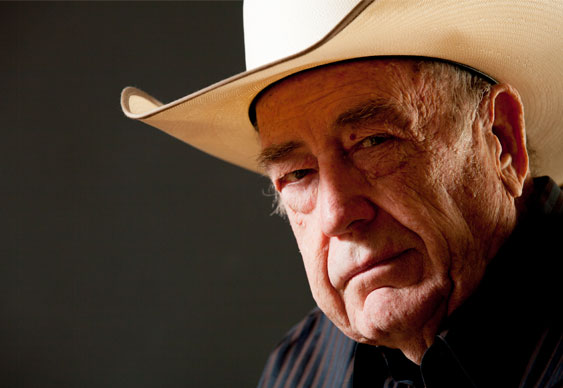Objective
Playing a Hand of Omaha Hi-Lo
Hand RankingsIt's necessary to split up our hand rankings into two parts here. The hi-card hands and the lo-card hands. The hi-hands are exactly the same as in Omaha-hi and are as follows.
Omaha High-Hands
 Royal Flush – T, J, Q, K, A all of the same suit. This is the strongest hand in Omaha-8 and is made somewhat rarely. It will generally be made less frequently than in Omaha-hi due to the different types of starting hands that are generally considered premiums.
Royal Flush – T, J, Q, K, A all of the same suit. This is the strongest hand in Omaha-8 and is made somewhat rarely. It will generally be made less frequently than in Omaha-hi due to the different types of starting hands that are generally considered premiums. Straight Flush – 5 cards in a row, all of the same suit. For example 5,6,7,8,9 of diamonds.
Straight Flush – 5 cards in a row, all of the same suit. For example 5,6,7,8,9 of diamonds. Four-of-a-Kind – 4 cards of the same value. For example QQQQ, or 5555. Usually referred to as “Quads”
Four-of-a-Kind – 4 cards of the same value. For example QQQQ, or 5555. Usually referred to as “Quads” or KKK99. Often referred to as a “boat”.
or KKK99. Often referred to as a “boat”. Straight – Any 5 cards in ascending order. For example 5,6,7,8,9 but not all of the same suit.
Straight – Any 5 cards in ascending order. For example 5,6,7,8,9 but not all of the same suit. Commonly referred to as “trips” when made with one hole-card and a “set” when made with both hole-cards as in the case of holding a “pocket-pair” such as KK72.
Commonly referred to as “trips” when made with one hole-card and a “set” when made with both hole-cards as in the case of holding a “pocket-pair” such as KK72. the same value. For example QQTT9 or JJ447.
the same value. For example QQTT9 or JJ447.Omaha Low Hands
- Flushes and straights do not count against our hand. The nut lo-hand is therefore A,2,3,4,5. Remember that we must use exactly two of our hole-cards for the lo-hand also. These don't have to be the same 2-cards that we use for the hi-hand however. So if we hold AQJK, and the board is 2,3,4,5,Q we do not have the nut-low and we do not have a straight for a decent hi-hand. We actually have pair of Queens and no low-hand.
- Aces are always low
unlike in other variants such as 2-7 triple draw. If we struggle to read lo-hands, we simply should think of them as a number. For example it's a common beginners mistake to assume that A,2,3,4,7 is a better hand than 2,3,4,5,6. If we read them backwards as numbers – I.e 74,321 and 65,432 it should be pretty easy to see that the second hand is lower and therefore stronger. We can refer to the first hand as a 7-low and the second hand as a 6-low. The nuts, A,2,3,4,5 is referred to as the “nut low”.
- Suits are not relevant to the strength of our hand unlike other variants such as Stud. Equivalent hi-hands will chop the high pot regardless of the suits contained.
- Low hands must “qualify”. In order for a low hand to “qualify” it needs to contain 5 cards below an 8. Remember that only two of these can be from our hole-cards. This means that it is impossible for anyone to have a qualifying low hand if there are not at least 3 cards below an 8 on the board. In such situations Omaha-hi/lo plays like the regular Omaha-hi. There is no low pot awarded and the best hi-hand scoops the entire pot.
Betting Structure
While initially Omaha-8 was primarily played with a fixed-limit betting structure, PLO8 has rapidly become more popular and is the most common format of the game played. In recent years NLO8 tables have begun to spring up on certain networks.Why Play Omaha-8?
- Omaha-8 is hugely challenging, even when it comes to simple things like understanding the strength of our hand. This can be complicated enough in the Omaha-hi variant when we have a wrap and flush-draws going on at the same. Now imagine this situation but we are also at the same time calculating what our current low-hand is or our percentage chance we will hit our low-draw. Initially we may even feel that playing a single-table of this variant takes our full focus and concentration.
- Due to the challenging nature of Omaha-8 games, the competition is relatively soft. Very few players understand good strategy – and many do not even understand fully how to read the strength of their hand. Some are even surprised that they have chopped the pot with someone since they thought they were playing Omaha-hi.
- Omaha-8 is a lot lower variance than hold'em or Omaha. This is to do with the split-pot nature of the game. In the majority of showdown situations we are not going to be losing the entire pot. We will often end up splitting or quartering the pot. This means that going on prolonged downswings is less likely assuming that we have a winning strategy. As a result we can get away with lighter bankroll requirements and play higher stakes. Low variance, soft-games, a fun challenge. What more could we want!
Omaha-8 Pointers
- Play to Scoop! - The number one beginner mistake in this game is that players are aiming to win only one of the two pots. They'll typically decide each round whether they are trying to make a hi-card hand or a lo-card hand. This is not going to be a winning strategy in the long run. Our objective is to scoop both pots as much as possible.
- Starting Hands – Some of the hands that are decent starting hands in Omaha-hi are actually not decent starting hands in Omaha-8. Firstly we are looking to play hands that contain an Ace and a Two in most cases, to maximise our chances of making the nut-low. Something like As2sAd3d would be an excellent starting hand. Notice how we have nut-flush potential in 2 suits and also excellent nut-low potential.
- Avoid Mid-Rundowns – Rundowns are excellent starting hands in Omaha-hi. For example 6s7s8d9d. These are horrible hands in Omaha-8. In many cases to make a decent straight with this hand it means that there is likely to be a qualifying low available. So we can basically never win the entire pot. Even though such a hand can qualify for a low-hand it's rarely going to be the best low-hand since it will usually be an Seven-Six-low.
- Counterfeiting – It's useful to be aware of this concept since we can get into trouble if not. Let's say we hold A2 and the board texture is 8,7,5. We have the absolute best nut-low. A,2,5,7,8. However let's the say the turn card comes a 2. We have now been counterfeited. Why is this? Our absolute hand-strength has not changed, but our relative hand-strength has changed. If opponent has A3 he now has A,2,3,5,7 for Seven-low which will beat our A,2,5,7,8 for Eight-low. Holding A23x on the 8,7,5 board gives us counterfeit protection, because if that 2 falls we still hold the nut-low.
I hope you enjoy learning to play Omaha Hi/Lo! Please leave any questions or comments below, I'd love to hear from you!


